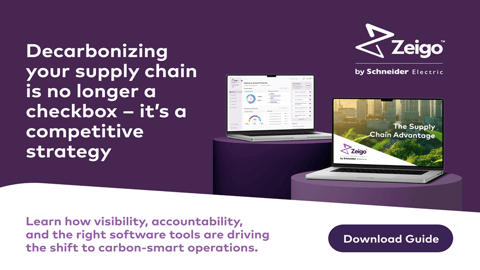Supply Chain Visibility: Inside USAopoly’s Evolution Into a Data-First Organization
It’s widely accepted that access to and analysis of data drives better outcomes across an operation. The problem faced by USAopoly, a Southern California-based specialty game maker also known as The Op Games, was determining the most time- and cost-efficient ways to collect that data and how much time data collection should monopolize.
“Anytime you work with data, it’s 80% front end work to get the data to a position where you can actually analyze it, and 20% analyzing and making business decisions based on what the data is telling you,” Eric Richardson, USAopoly’s manager of forecasting and data analytics, notes to CGT. “Every Monday we used to have to pull POS from all of our retailers and then put it into an XLS template where we did all our forecasting. It took probably six hours of my time.”
USAopoly own creates custom versions of popular games such as Iron Maiden, Peanuts, or “Yellow Stone” versions of Monopoly; Harry Potter, Spongebob, or “It’s Always Sunny in Philadelphia” Trivial Pursuits editions; and The Grinch, Dungeons & Dragons, and “Dexter” Clue variations. But as the business continued to grow, the company recognized it needed to implement more automated supply and demand forecasting.
“What we wanted to do was find someone who could do demand forecasting, supply plan generation, and then could be a single source of truth for all of our data from our customers,” he explains.
The company tapped demand and inventory analytics provider Alloy.ai, and USAopoly can now connect a game brand’s sell-through data from retail and e-commerce with its internal inventory and supply chain data to create and quickly execute more responsive plans, demonstrating the capabilities of infusing AI in the supply chain.
“It all comes down to having data that's easily accessible and that is correct,” Richardson says. “You need to really look at what your retailers have on hand, what your retailers are selling, and think like a buyer would think. Because when you’re trying to understand the supply chain and forecast the supply chain, what you’re doing is trying to understand how the end consumer is going to buy a product. You have to understand exactly how the buyer thinks, how they’re looking at the data, and what metrics they’re looking at.”
With data pulled directly from Partners Online, Retail Link, and Retail Analytics, USAopoly created end-to-end visibility that ensures that the company’s warehouse team, producers, and customers all are operating from the same page.
“We’re essentially looking at the same exact information that our counterparts on the other side are looking at,” Richardson says, “and helping them make decisions based on the same familiar metrics they are looking at themselves.”
For Richardson, USAopoly’s new data-first approach also has proven to be an operational time saver.
“Now my team and I can spend a lot more time actually doing the hard analysis of the data and making business decisions on the data rather than wasting time prepping the data,” he reports. “So the time it saved me personally and my team is equal to multiples of what we’re actually paying for the product each year.”
Richardson has put that time saved to good use by fostering a company-wide change in how decisions are made. The marketing department can see immediate sell-through data and more quickly gauge the value and impact of both digital and print campaigns. Finance gets a more visible pipeline, and how the POS is supporting the company’s revenue goals for the year. Purchasing receives more tangible visibility into what’s happening in the marketplace to purchase with more confidence with data-supported lead times.
“Every decision we make is a data-backed decision that we can model, play out, and really test how it’s going to work before we commit our hard-earned capital,” Richardson says. “So, a lot of business processes have changed, from marketing, to the finance organization, to the way we order product, to the way we interact with our category buyers at our retailers.”
“We’re measuring success by how much money it’s saving us, how much time it’s saving us, and how deep the data adoption within our organization has become now since the data is so easily accessible and the dashboards are so user friendly,” he notes. “Everyone is able to benefit from having up-to-date information at hand and being able to easily manipulate it at any time. It all comes down to having data that’s easily accessible and that is correct.”
- Tech Deep Dive
USAopology partnered with Alloy.ai and served as an active participant in shaping the product roadmap. CGT caught up with Logan Ensign, chief customer officer at Alloy.ai to learn more about the technology enabling the game company’s data evolution.
In pulling data from multiple external sources, what are some of the steps taken to ensure the data is properly cleansed to provide cohesive insight?
We integrate from anywhere with a data-format-agnostic platform, including from retailer partner portals, EDI, spreadsheets, email forwarding, APIs and more. The data platform automatically cleanses and verifies the recency and accuracy of data, and then uses sophisticated data modeling and AI to harmonize the disparate sources and create a unified representation of your finished goods supply chain.
Alloy.ai automatically translates SKU identifiers, units of measure and other attributes across distribution partners and your internal systems. It maps locations and location types, shipment lanes, DC inventory targets, lead times and more by SKU. It can understand the past, present and future by flexibly analyzing your data at any time interval, modeling different fiscal calendars, granularities, forecast versions and more.
From an IT perspective, where do CPGs most often run into trouble when integrating a new data platform?
You can think about this in two different ways. Some CPGs try to do this themselves, to have IT build a custom solution to do this. The challenge is, retailers do not meet you where you are. You need to meet them where they are. You need to ensure you have expertise across the retail data set, or else you’re going to struggle to define and map the data — even struggle to just acquire the data. There is so much diversity in how data is translated, and it is a moving target as well with the portals constantly changing.
One common pitfall CPGs fall into is to take the path of least resistance. One example we see a lot: Walmart, Target and Amazon provide daily sales. But they only get a weekly EDI from Best Buy. So they just decide to report weekly data from all of the retailers because that is consistent. They make a lot of small compromises like this, and they add up. If you take that path, you’re going to end up with something that is still a massive data project, but when you get to the end of it, you’re going to have a generic data set that doesn’t give the value of understanding what’s happening at the day, store, SKU level.





